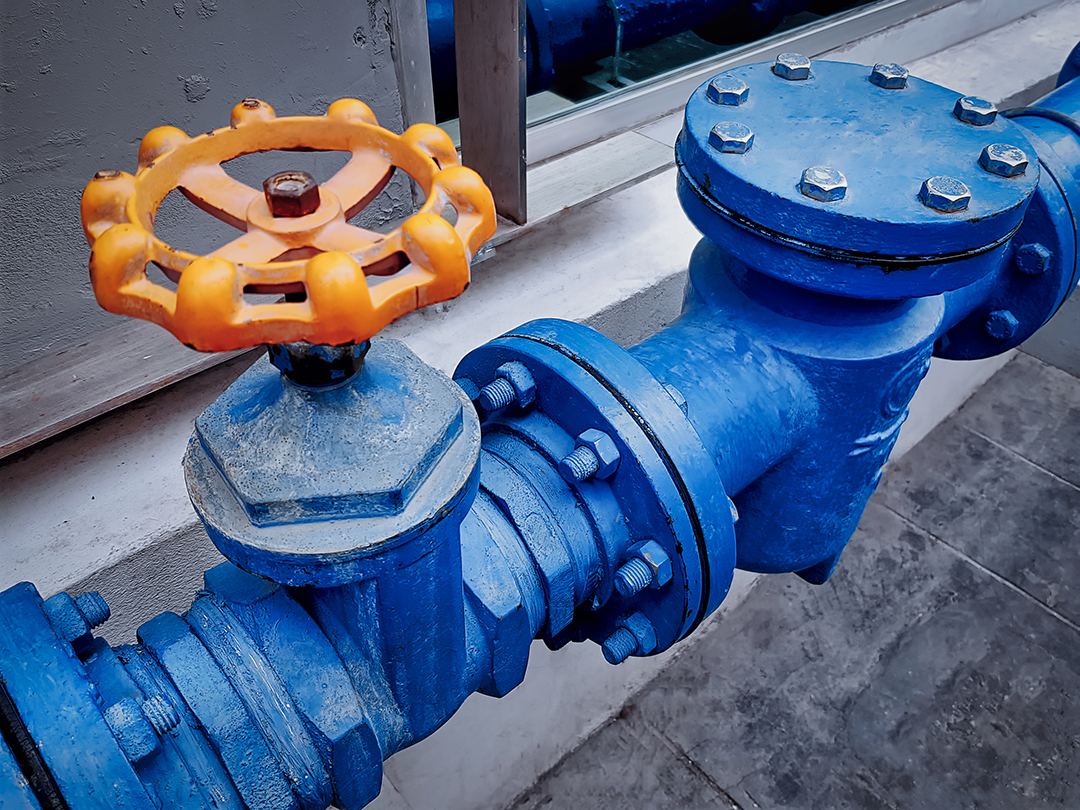Reliable sealing in a piping system starts with one core principle: matching the right flange and gasket materials. Even the strongest metal components or most advanced gasket materials can fail prematurely if they’re incompatible. These failures don’t just cause inconvenience. They often lead to safety risks, shutdowns, and unexpected costs across industrial operations.
Across oil and gas, chemical processing, water treatment, and other high-demand industries, maintaining piping integrity is non-negotiable. And at the heart of system integrity is a question often overlooked during procurement or maintenance: Are your flanges and gaskets truly compatible?
The Role of Flanges and Gaskets in Pipe Sealing
Flanges provide the mechanical support that connects piping sections, valves, and other components. Gaskets act as compressible sealing materials between flange faces, creating leak-proof joints that can withstand internal pressures, chemical exposure, and temperature variations. While simple in concept, these components operate under intense physical and environmental conditions that can test even the best materials.
If the flange face is misaligned, corroded, or mismatched with the gasket material, the seal may degrade. Whether it’s spiral wound gaskets used in refinery pipelines or full-face gaskets in water systems, each type is optimized for specific flange types and pressure ratings.
Consequences of Incompatibility
Incompatible flange and gasket pairings create a weak link in the system. Some of the most common consequences include:
- Leakage: Gaskets that are too soft or too hard for the flange face can fail to seal under compression, leading to leaks at the joint.
- Blowouts: In high-pressure environments, improper seating or misalignment increases the risk of blowouts, which are sudden gasket failures that can endanger workers and assets.
- Chemical degradation: When gaskets are exposed to media they are not rated for, rapid material breakdown can occur, compromising the seal and leading to process contamination or corrosion.
- Excessive maintenance: Frequent failures due to compatibility issues result in repeated shutdowns and increased operational costs.
Key Factors Influencing Flange Compatibility
Several variables determine whether a flange and gasket can operate together effectively. These include:
- Flange facing type: Raised face (RF), flat face (FF), and ring-type joint (RTJ) flanges each require a specific gasket style and hardness to maintain sealing pressure.
- Surface finish: The smoothness or roughness of the flange face affects how well the gasket can conform and seal.
- Flange material: Dissimilar metals may expand differently under heat, creating stress points that affect gasket sealing.
- Bolt load distribution: Uneven bolt tension can distort the flange face and affect how the gasket compresses, especially in large-diameter flanges.
Matching a soft gasket with a serrated or rough flange surface may provide enough grip to prevent blowout. But pairing that same gasket with a smooth flange face may result in slippage or extrusion under pressure.
Understanding Gasket Compatibility
Just as flanges must be assessed, gaskets must be selected based on their physical and chemical compatibility with both the media and mechanical assembly. Considerations include:
- Temperature range: Materials like PTFE handle low-temperature corrosives well, while graphite gaskets withstand extreme heat.
- Media resistance: Elastomers like EPDM are great for water but incompatible with hydrocarbons. Nitrile, on the other hand, resists oils but not ozone.
- Compression and recovery: A gasket should compress easily without losing elasticity. Poor recovery increases the chance of leak paths forming after cycling or vibration.
Even the best-designed flange cannot compensate for a gasket that is chemically incompatible or lacking sufficient strength under pressure.
Common Flange and Gasket Pairings
Understanding standard flange-gasket combinations is essential for reliable industrial piping systems. Each flange design requires specific gasket materials and configurations to achieve optimal sealing performance. The table below outlines the most common pairings and their application considerations based on industry standards:
| Flange Type | Recommended Gasket Type | Notes |
| Raised Face (RF) | Spiral wound, ring gaskets | Ensure proper seating to prevent radial blowout |
| Flat Face (FF) | Full-face soft gaskets (EPDM, nitrile) | Use with cast iron flanges to prevent flange breakage |
| Ring-Type Joint (RTJ) | Metal ring gaskets (oval or octagonal) | For high-pressure and high-temperature service |
Why Piping Integrity Depends on Compatibility
Every component in a piping system contributes to its performance. But the interface between flanges and gaskets is where integrity is most tested. Systems that carry pressurized fluids such as crude oil, gas, chemicals, or water are only as reliable as their weakest seal. A minor incompatibility between materials can compromise the system’s safety and lifespan.
Piping integrity also involves long-term performance. Gaskets that degrade or stiffen over time will gradually fail. That’s why regular inspection and understanding of aging behavior are necessary in harsh industrial environments. Compatibility isn’t a one-time decision. It must be continually managed based on usage and wear patterns.
Best Practices for Ensuring Compatibility
To avoid the risks associated with mismatched flanges and gaskets, apply these practices during procurement and maintenance:
- Follow ASME and API standards: These provide clear specifications for pressure classes, dimensions, and materials.
- Use materials datasheets: Don’t guess on chemical resistance. Rely on vendor-supplied compatibility charts.
- Conduct joint integrity audits: Review flange condition, bolt torque, and gasket selection as part of routine inspections.
- Choose suppliers that understand application-specific needs: Partner with suppliers who can recommend compatible material combinations for your operating conditions.
Improper Installation Can Undermine Compatibility
Even when the materials are matched correctly, a poor installation can negate all the advantages. Common mistakes include:
- Overtightening bolts, which can crush soft gaskets.
- Skipping surface cleaning, which can lead to improper seating.
- Reusing gaskets, especially in high-pressure applications.
- Neglecting proper torque patterns during flange assembly.
Training maintenance teams and enforcing quality checks during installation are just as important as material selection when preserving sealing effectiveness.
Reliable Supply for Flange and Gasket Compatibility
Coastal Resource Group supports industrial operations across Texas with fast delivery of materials that ensure secure, leak-free piping systems. We specialize in products that align with proper flange and gasket compatibility, helping clients avoid downtime and sealing failures.
- HDPE pipes, flanges, and pressure-rated fittings
- Gaskets for RF, FF, and RTJ flange types
- Fusion machine rentals and welding equipment
- Industrial bolts, fasteners, and PPE
With 24/7 availability and rapid delivery to even the most remote sites, Coastal Resource Group keeps your projects moving without delay.
Contact us now to get a quote and keep your piping systems sealed and running strong.


